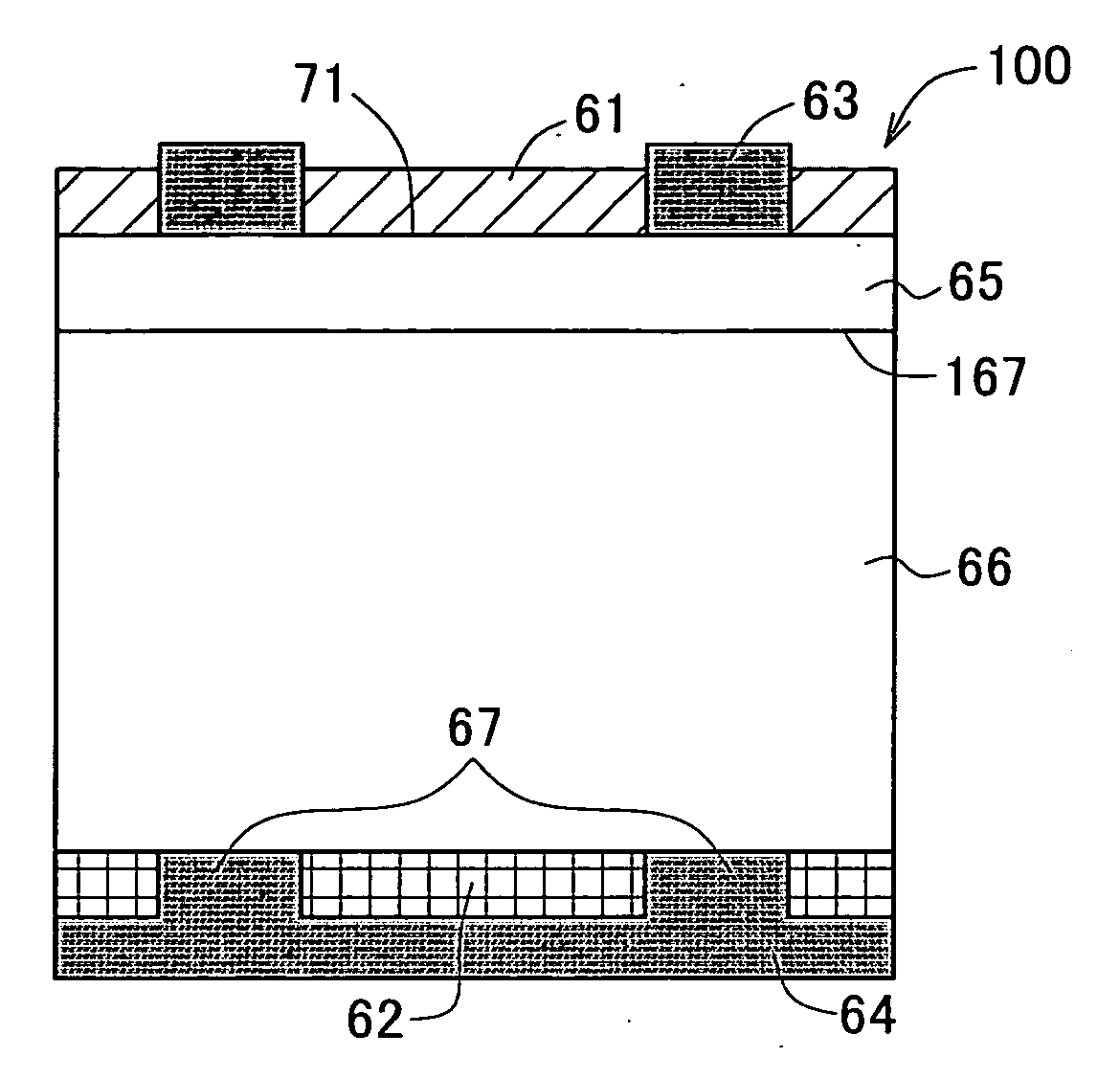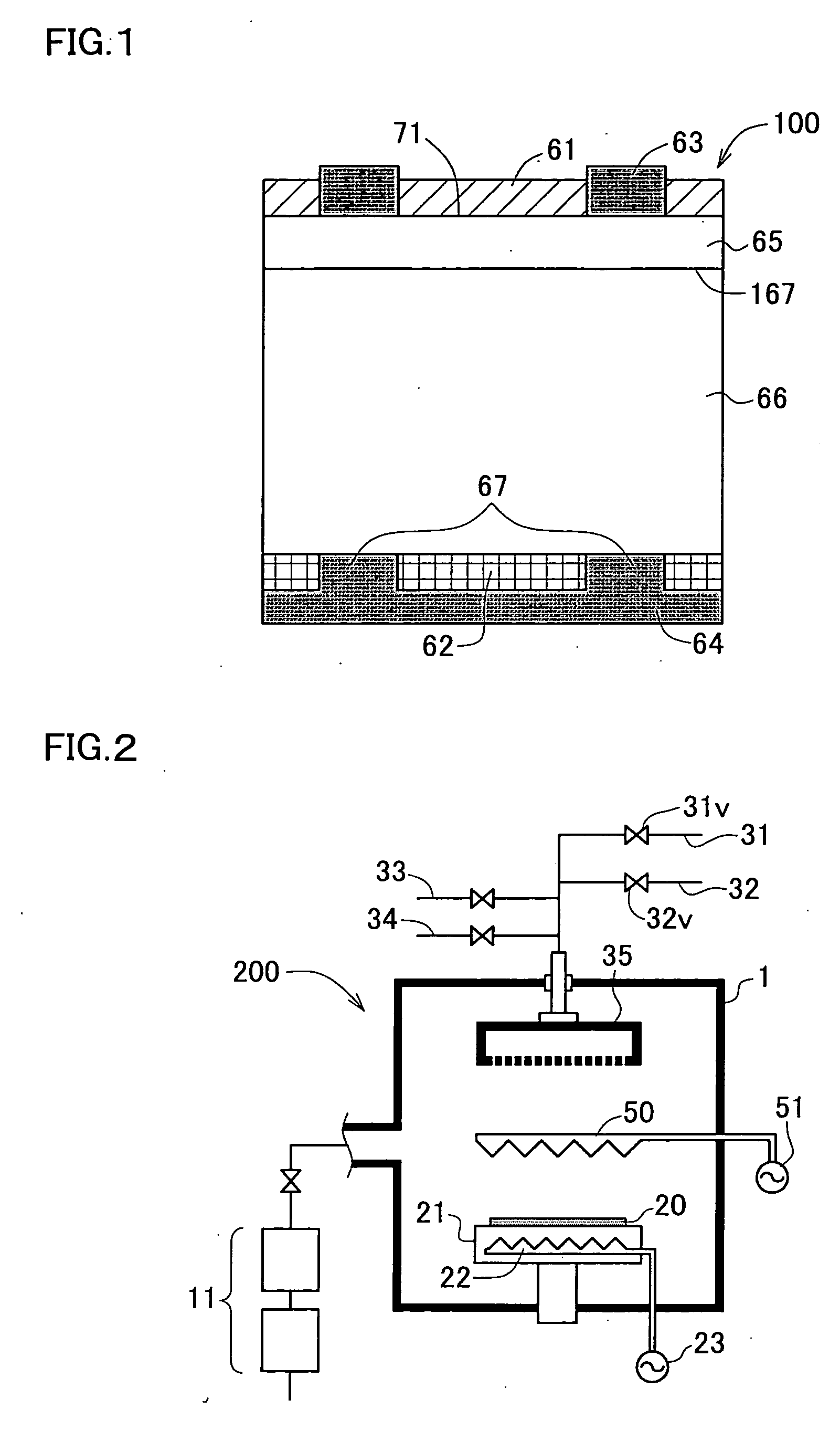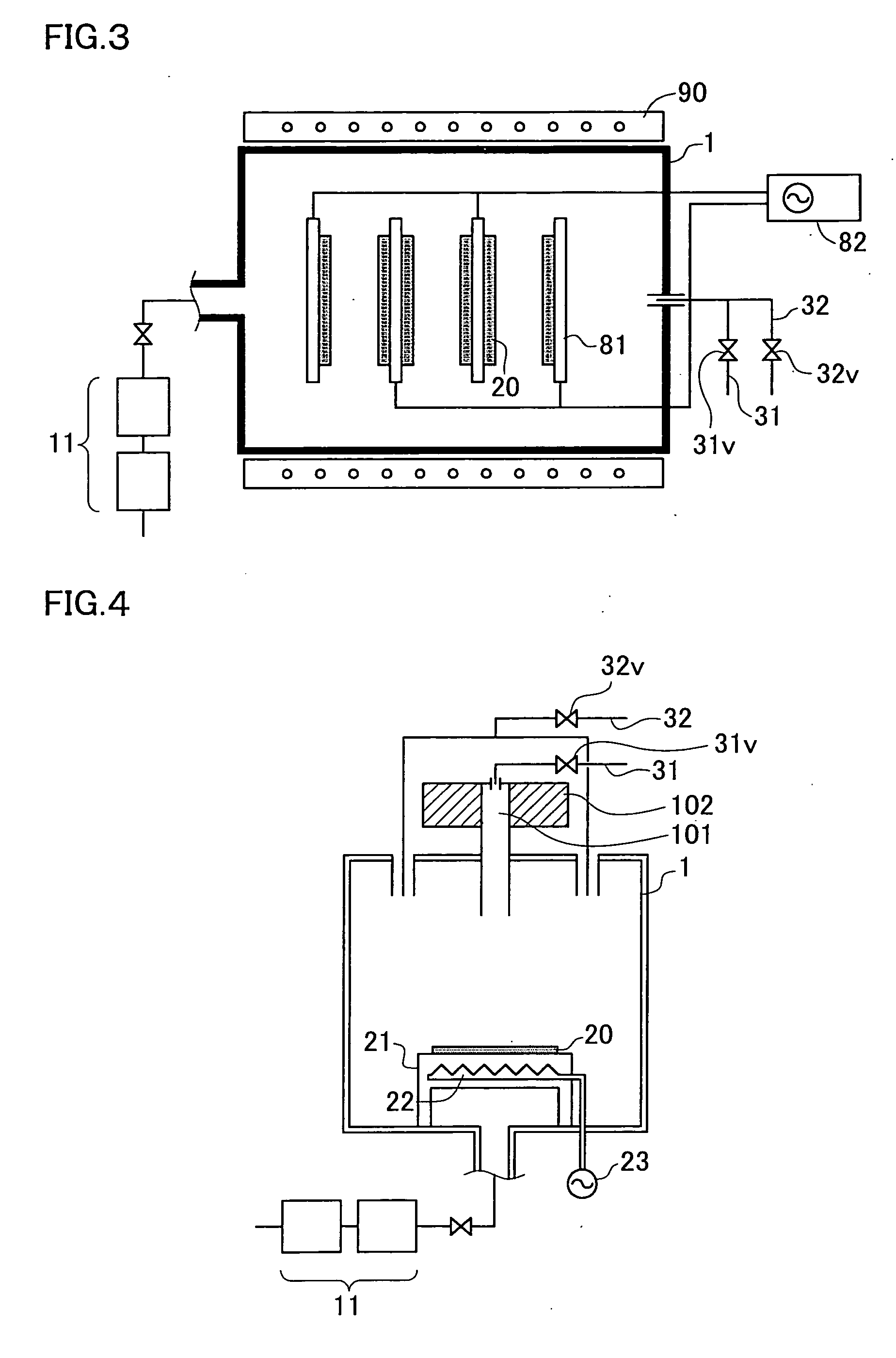Solar cell and method of fabricating the same
a technology of solar cells and insulating films, applied in the field of solar cells, can solve the problems of poor passivation effect, small reflection loss, low conversion efficiency , etc., and achieve the effect of reducing the substrate temperature and improving the passivation characteristic of the insulating film
- Summary
- Abstract
- Description
- Claims
- Application Information
AI Technical Summary
Benefits of technology
Problems solved by technology
Method used
Image
Examples
experiment 1
[0070] A 3-inch circular (100) single crystal silicon substrate (FZ method, B doped) having a resistivity of 1.5 Ωcm was cleaned with 2% hydrofluoric acid for 1 minute, rinsed with ultra-pure water for 5 minutes, and dried by blowing a dry nitrogen. Thereafter a silicon nitride film of 80 nm thick, having a refractive index of 2.4 (Si / N atomic ratio=1.48: without hydrogen dilution), was formed on both surfaces thereof by the catalytic CVD process. Next, an effective lifetime was measured using a lifetime scanner while irradiating a white bias light of 0.5 sun, and the surface recombination velocity was calculated on the basis of a result of lifetime measurement of the same substrate but subjected to chemical passivation (iodine / ethanol treatment). On the other hand, using a 400-W metal halogen lamp as a light source, one surface of the sample was exposed to ultraviolet radiation, from which wavelength component of 320 nm or shorter is cut by a filter, for 32 hours and 128 hours, and...
experiment 2
[0071] The silicon substrate was cleaned and dried according to the procedures similar to as described in Experiment 1, and by the catalytic CVD process, the substrate was surface-treated using ammonia gas, on both surfaces of which the silicon nitride film having a refractive index of 2.4 was deposited, and then a similar measurement was carried out.
experiment 3
[0072] The silicon substrate was cleaned and dried according to the procedures similar to as described in Experiment 1, and by the catalytic CVD process, the substrate was surface-treated using ammonia gas, on both surfaces of which the silicon nitride film having a refractive index of 2.4 was deposited, post-treated using hydrogen gas, and then a similar measurement was carried out.
PUM
 Login to View More
Login to View More Abstract
Description
Claims
Application Information
 Login to View More
Login to View More - R&D
- Intellectual Property
- Life Sciences
- Materials
- Tech Scout
- Unparalleled Data Quality
- Higher Quality Content
- 60% Fewer Hallucinations
Browse by: Latest US Patents, China's latest patents, Technical Efficacy Thesaurus, Application Domain, Technology Topic, Popular Technical Reports.
© 2025 PatSnap. All rights reserved.Legal|Privacy policy|Modern Slavery Act Transparency Statement|Sitemap|About US| Contact US: help@patsnap.com



